Best trees to grow in pots – 12 compact varieties for year round interest
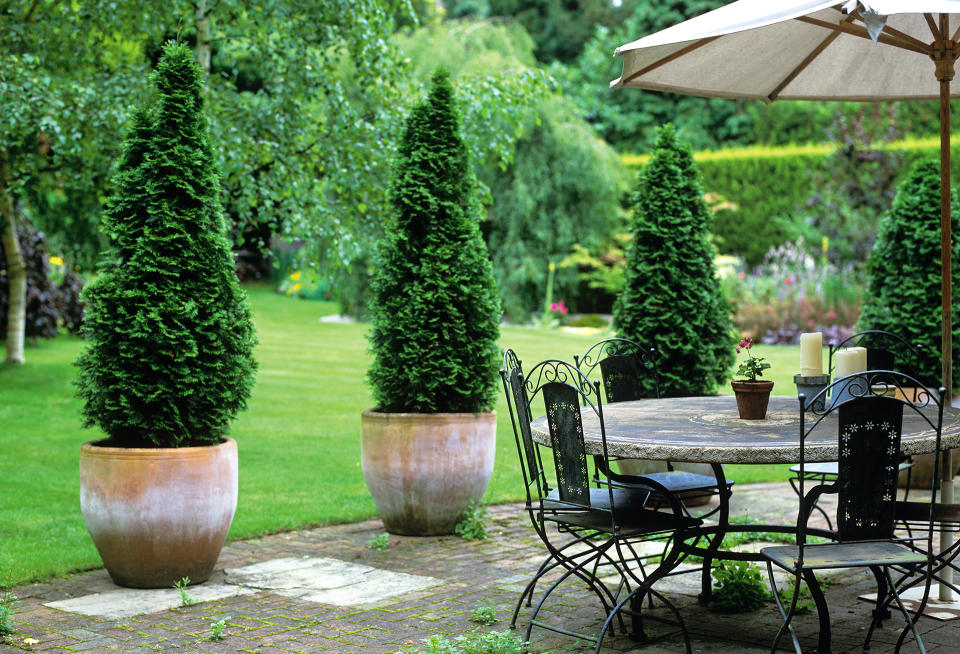
The best trees to grow in pots can add much needed interest to patios, courtyards and other areas of your back yard.
With both deciduous and evergreen options, offering various leaf color, fruit and flowers through the seasons, potted trees are versatile container gardening.
Growing pots in trees is a way to zone a secluded seating or dining area as a patio, flowering trees can add color and scent, while citrus or olive trees are ideal if you want to create a Mediterranean-style garden.
One of the big advantages is that you can grow tree species that wouldn't usually suit the growing conditions in your hardiness zone as the best trees to grow in pots can be moved indoors in colder months.
(Leigh Clapp)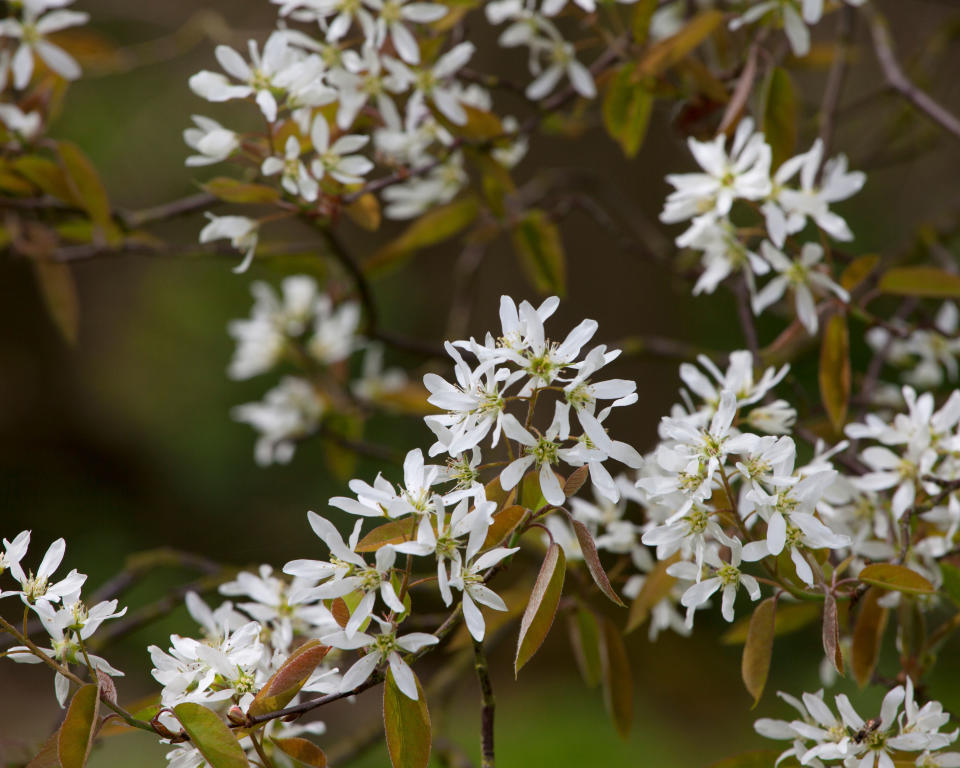
A small, compact deciduous tree, amelanchier – known by a number of other names including juneberry, shadbush and sarvisberry – offers interest through the seasons. It produces lovely starry white flowers in spring, red and purple berries in summer through to fall, and its bronze tinged young leaves turn through green to the fiery colors of orange and red, making this undoubtedly one of the best trees to grow in pots.
Amelanchier prefers a spot in full sun, so move the container to the best spot throughout the year. Plant bare root trees for the most economical option, in ericaceous compost in a large pot.
(Leigh Clapp)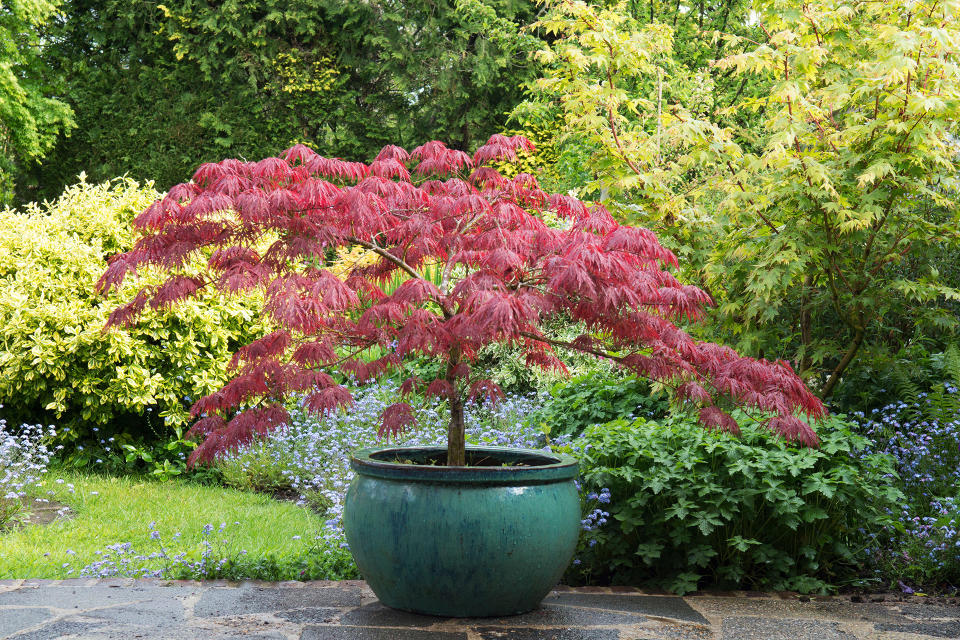
Japanese maple trees – or acer palmatum – are ideal for smaller gardens, as they are slow growing and require minimal pruning or training. They also offer lovely fall color.
‘With a variety of showy cascades in foliage and colors ranging from vibrant greens to deep blood reds, this is a showcase tree for container growing,’ says Tammy Sons, owner of Tennessee Nursery.
‘Japanese maple trees do not grow to extreme heights, seldom reaching over 15 feet. My favorite varieties are 'Crimson Queen' and 'Bloodgood', with their added attribute of spectacular fall foliage.’
Meanwhile, Lisa Tadewaldt, arborist and owner of Urban Forest Pro, particularly favors the dwarf maple 'Sharp's Pygmy'. ‘They can live in a pot for hundreds of years,' she says. 'You can ignore them or pamper them – either way they always look great. This is a favorite of serious bonsai artists, and what I personally have on my deck in pots.’
Position Japanese maples in a cool spot that receives some shade during the hottest part of the day, and water regularly in the summer.
(Ian West / Alamy Stock Photo)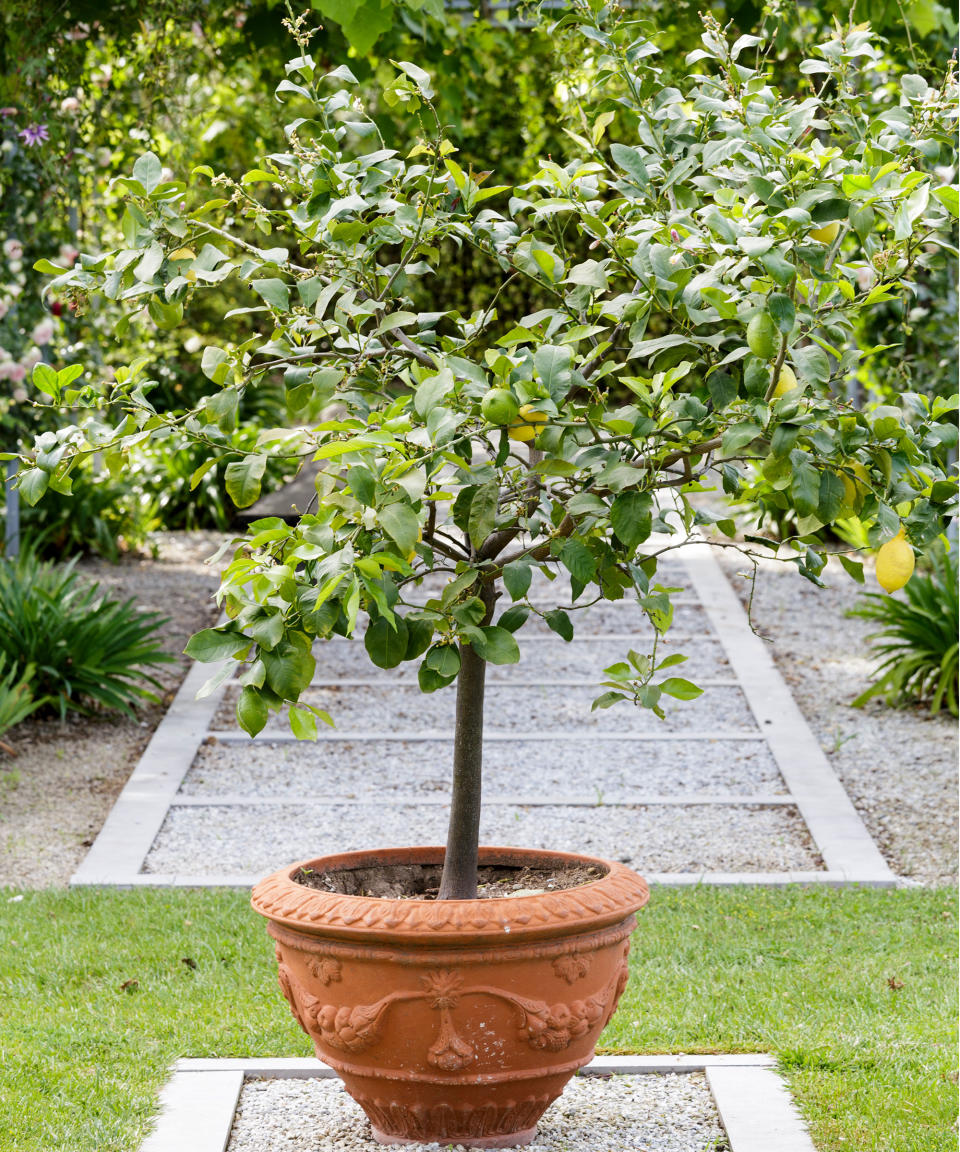
‘I always think there is something very romantic about a lemon tree growing in a pot,’ says Aaron Bertelsen, author of Grow Fruit & Vegetables in Pots. ‘Perhaps it is the way the scent of the blossom fills a room, or the knowledge that rich people in the past would build dedicated lemon houses to shelter their highly prized trees.’
While lemon trees make fantastic house plants during the winter, they can grow happily outdoors during the spring and summer. This is why planting them in pots is the best solution, so you can bring them indoors in frosty weather.
You can even learn how to grow lemon from seed, to surround yourself with these uplifting trees.
‘Lemons are hungry plants, so make sure you use a good, soil-based compost, adding some grit or sharp sand to improve drainage,’ adds Bertelsen, who recommends the Meyer variety as it flowers throughout the year.
Make sure you understand how to prune lemon trees to get the best out of them, and let them dry out between waterings.
(Future / Mark Bolton)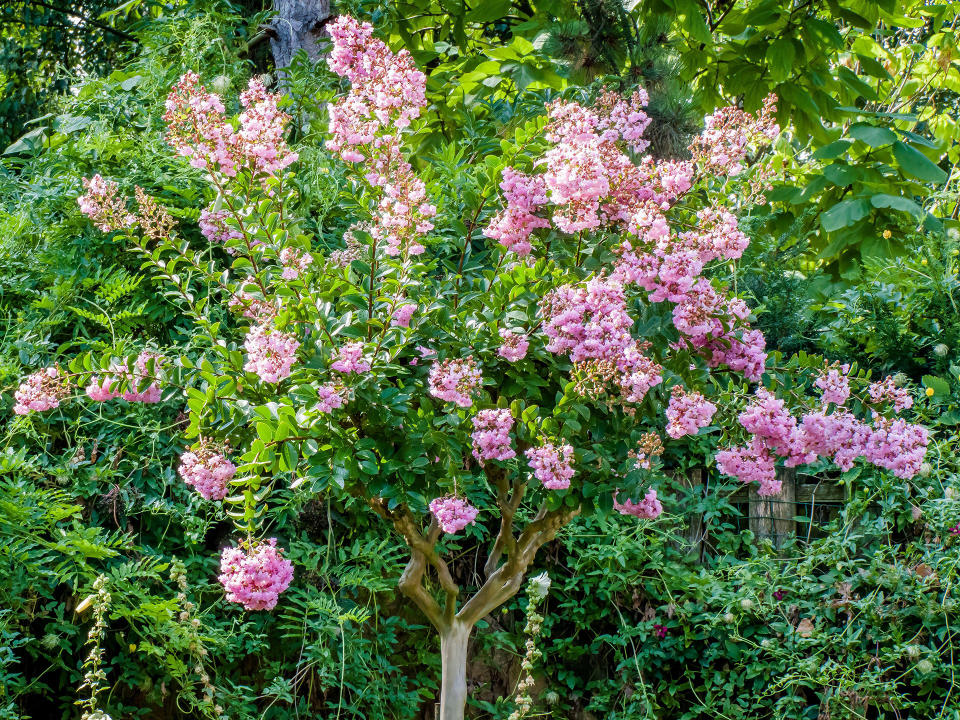
Crepe myrtle – or crape myrtle – is a striking tree that offers year-round interest, and grows very well in pots.
‘This beautiful tree has large trumpet-shaped flowers that often have an orange tint to them,’ says Lindsey Hyland, founder of Urban Organic Yield. 'Crape myrtles also have good fall color, with attractive peeling bark. I love how the branches are always thick enough to handle being in pots.’
Choose from flowers of white, pink or purple, which bloom from late spring through summer. Some varieties flower until the first frost in fall.
Crepe myrtle trees need full sun to thrive, and in frost-prone areas will need to be overwintered in a greenhouse or conservatory.
(Biosphoto / Alamy Stock Photo)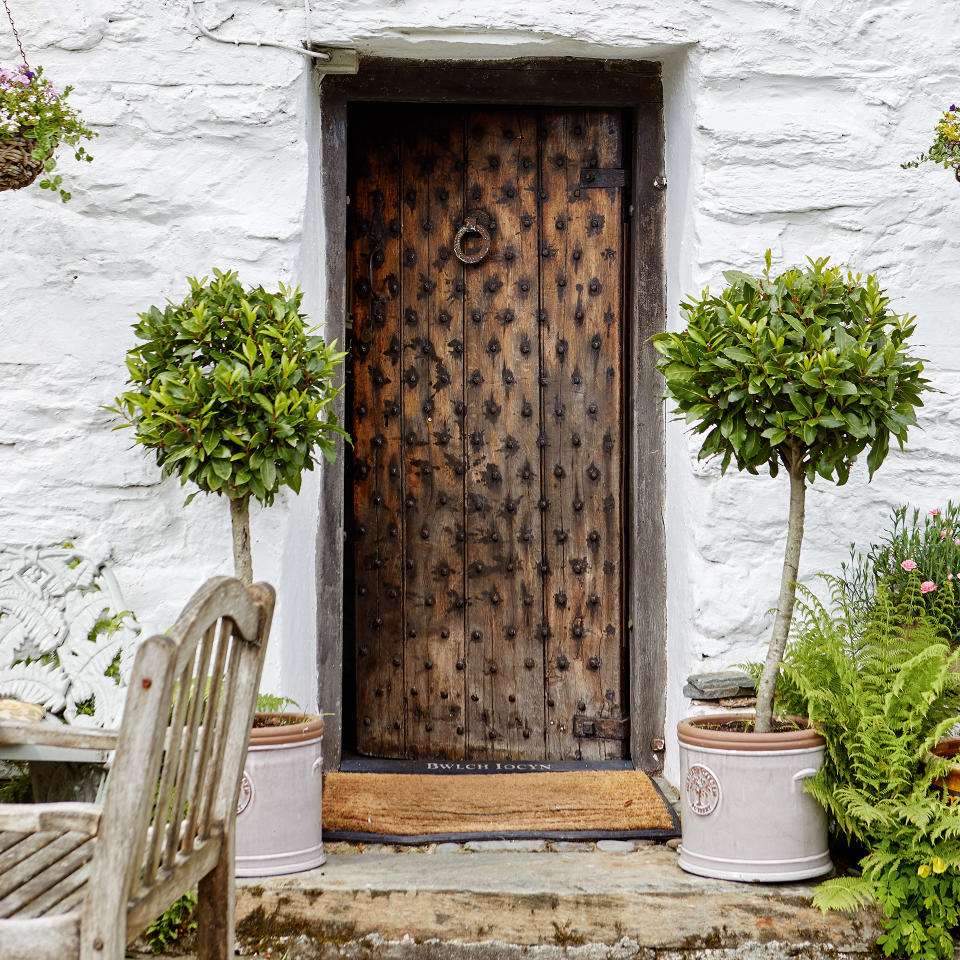
As well as creating a sculptural feature, bay trees are aromatic herbs that have wonderfully scented leaves that can be used in cooking fresh or dried.
Bay trees look particularly stunning in pairs flanking a doorway, or can be positioned next to seating areas on the patio for outdoor dining. They thrive in containers and can be clipped into attractive ball or pyramid topiary shapes.
‘A bay tree is very easy to look after, provided you give it a good sunny spot and feed it regularly,’ says Bertelsen. ‘Prune every spring, both to keep it at the size you want it and to reduce any congestion.’
It’s a good idea to repot bay trees every few years to keep them healthy and encourage fresh growth. Bay trees are an excellent choice for planter box.
Eucalyptus trees are similarly fragrant which will grow well in pots.
(Brent Darby)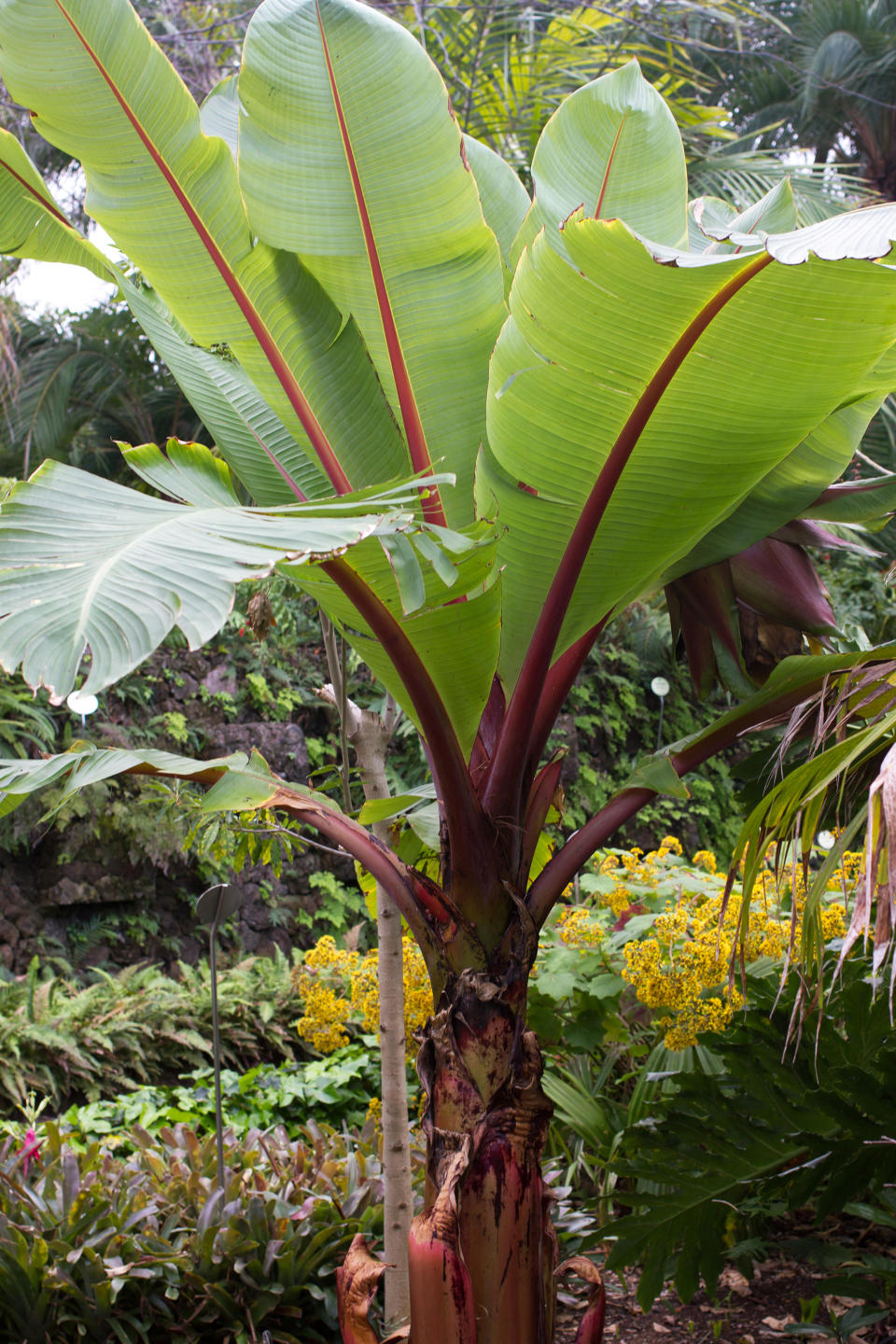
Banana trees are some of the best trees to grow in pots if you want to add a tropical garden to your patio. But bear in mind if you are growing a banana tree in the garden this will generally be for their ornamental leaves, rather than for fruit, unless you live in a climate of at least 60ºF (15°C) for most of the year.
‘If you live in a cooler climate, then a banana tree still brings a taste of tropics to your landscaping,’ says Tadewaldt. ‘The growth of these trees is usually stunted by the colder weather enough that they can live in the pot for an extended period of time.'
Smaller varieties of cold hardy banana trees are particularly well suited to climates with colder winters, as they can be brought inside and enjoyed as a houseplant.
(Oleksandr Sokolenko / Alamy Stock Photo)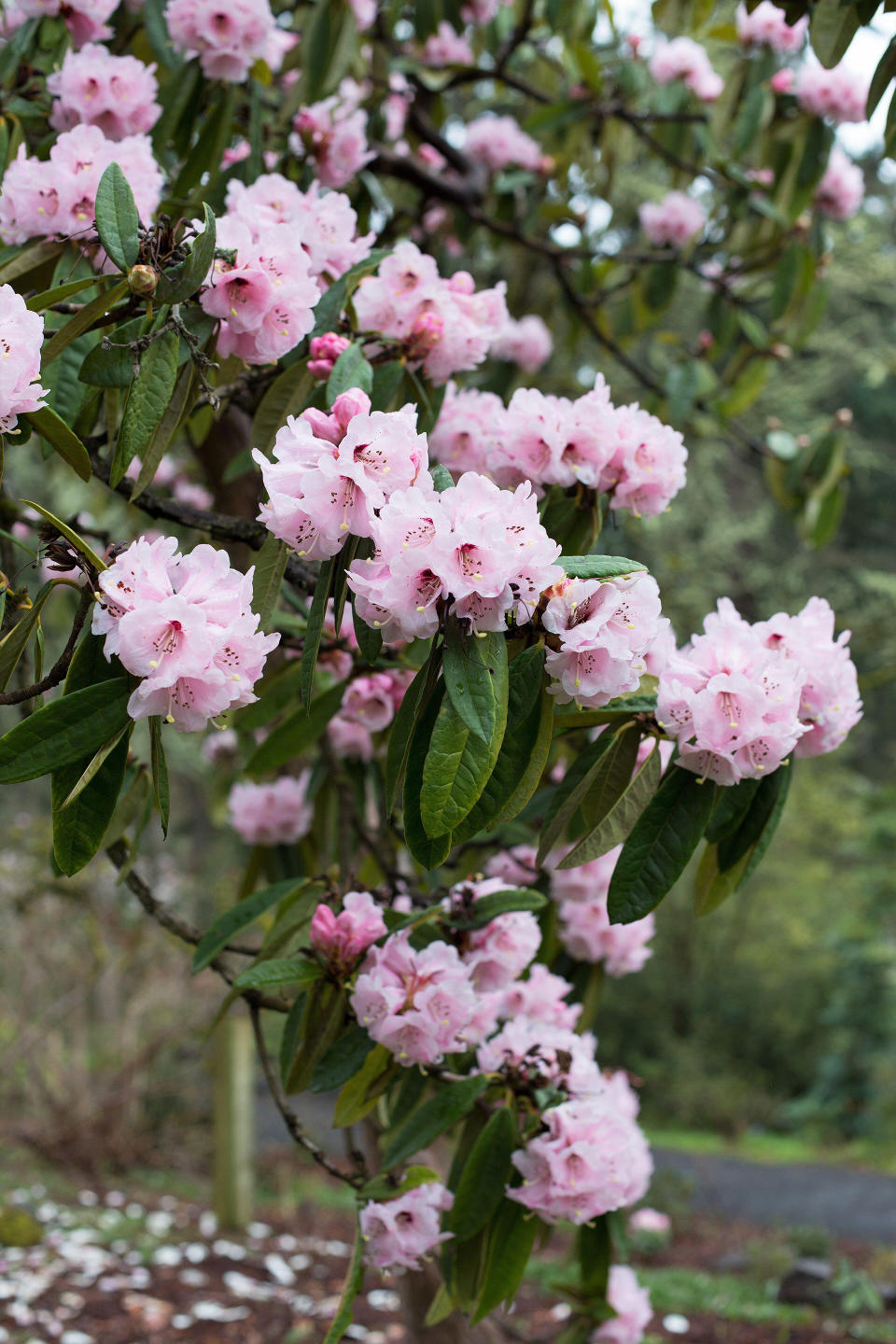
As well as the popular shrubs, rhododendrons are also available in tree form – R. arboreum. Although after several decades they can eventually reach great heights of over 40 feet, they are slow-growing trees that will live happily for years in a pot, so it is worth learning how to grow rhododendrons.
‘I really like rhododendron – it is such a pretty flowering tree with red and white flowers in the summer,’ says Hyland. As an evergreen tree, it possesses attractive dark green leaves year-round.
‘My favorite thing about it is its ability to thrive in stunted, acidic, or shallow soil conditions.’
Be sure you know how to prune rhododendron to keep your potted specimens under control.
(Gina Kelly / Alamy Stock Photo)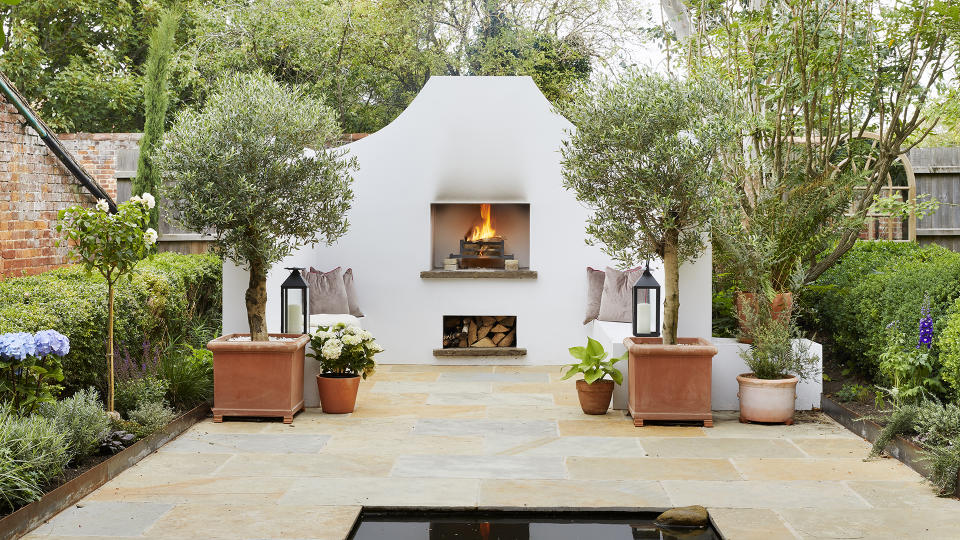
If you want to create a Mediterranean garden, olive trees are ideal and perfectly suited to growing in containers, as they can be moved to safety during excessively cold winters.
‘Olive trees are not fond of winter, so make sure to cover them if you know a frost is coming,’ says Barbosa Fernandes.
‘They love warmth and sun, and they also do well in dry areas. However, they do need the right conditions to produce olives.’
In order for the trees to fruit, they will need two months with temperatures below 50°F (10°C), but above 14°F (-10°C), as well as fluctuation between day and night temperatures. Although self-fertile, olive trees benefit from cross pollination.
‘If you don’t have the right conditions to grow olives, don’t be too disappointed, as they’re such elegant evergreen trees,’ says Barbosa Fernandes. ‘Fertilize them in the spring for the best results.’
You also need to know how to prune olive trees to improve their shape and increase the chances of fruit production.
(Darren Chung)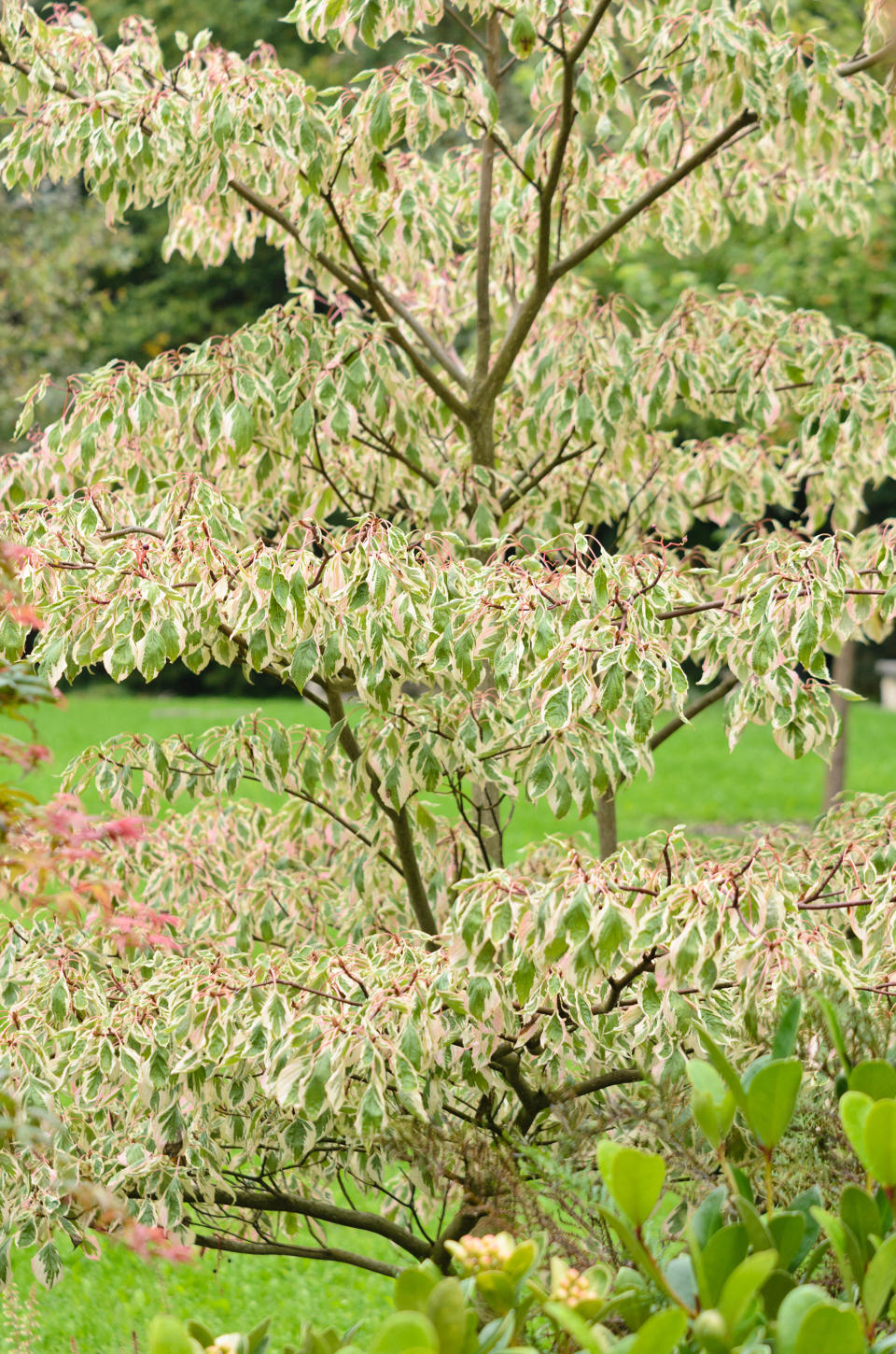
Also known as Cornus controversa 'Variegata', the wedding cake tree is a variegated dogwood tree.
‘The white in the leaves adds interest and it naturally grows in layers – like the layers of a cake, hence its name – and pruning will help to emphasize this form,’ says Tadewaldt.
However, regular pruning isn’t essential, and as the tree is slow-growing, it will live happily in its pot for a long time, as long as the soil is fertile.
‘Eventually, however, this tree will outgrow the pot and need to be transplanted,’ adds Tadewaldt.
(Steffen Hauser / Botanikfoto / Alamy Stock Photo)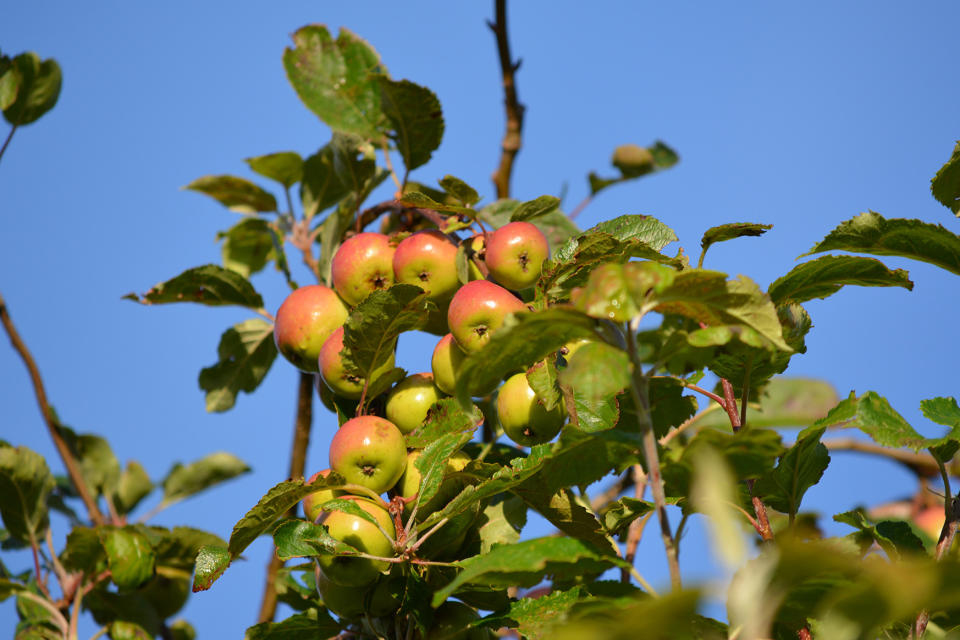
Smaller varieties of apple tree are perfect for growing in pots on the patio. Not only are varieties grown on dwarf rootstock usually quicker to fruit, but they are often better quality than larger trees.
When choosing a variety of apple tree, you need to consider pollination. ‘Self-fertile cultivars are available, although it’s generally recommended to have at least two different partner trees nearby for cross-pollination,' explains Period Living’s gardening expert Leigh Clapp.
When planting apple trees in pairs, 'opt for different varieties of apple tree that flower at the same time.'
If you only have room for one apple tree, Red Falstaff is a great choice as it is heavy cropping and very hardy. Apples trees are among the best fast growing fruit trees so you will enjoy a well sized tree before you know it.
(Unsplash)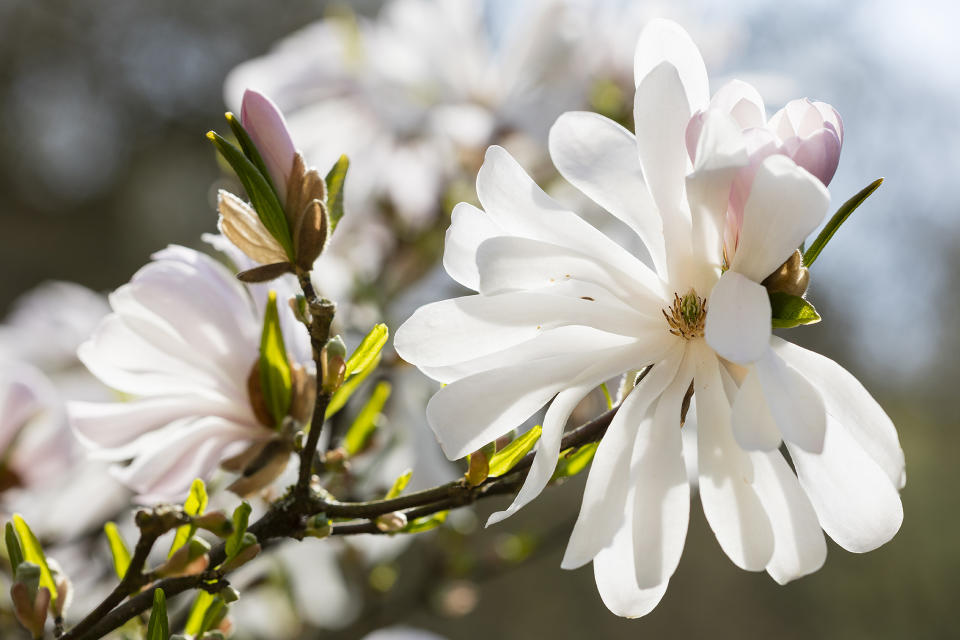
While most types of magnolia will grow too large to plant in pots, starry magnolia is a more compact, bushy tree that produces the most beautiful white, star-shaped flowers.
The tree flowers in the spring and exudes a delicate fragrance, adding a romantic air to a patio seating area.
Position starry magnolia in a sheltered spot, and plant in neutral to acid soil that is well drained.
When established, they are low maintenance, and require only mulching in spring, but learn how to prune a magnolia tree lightly in the summer.
(Getty Images)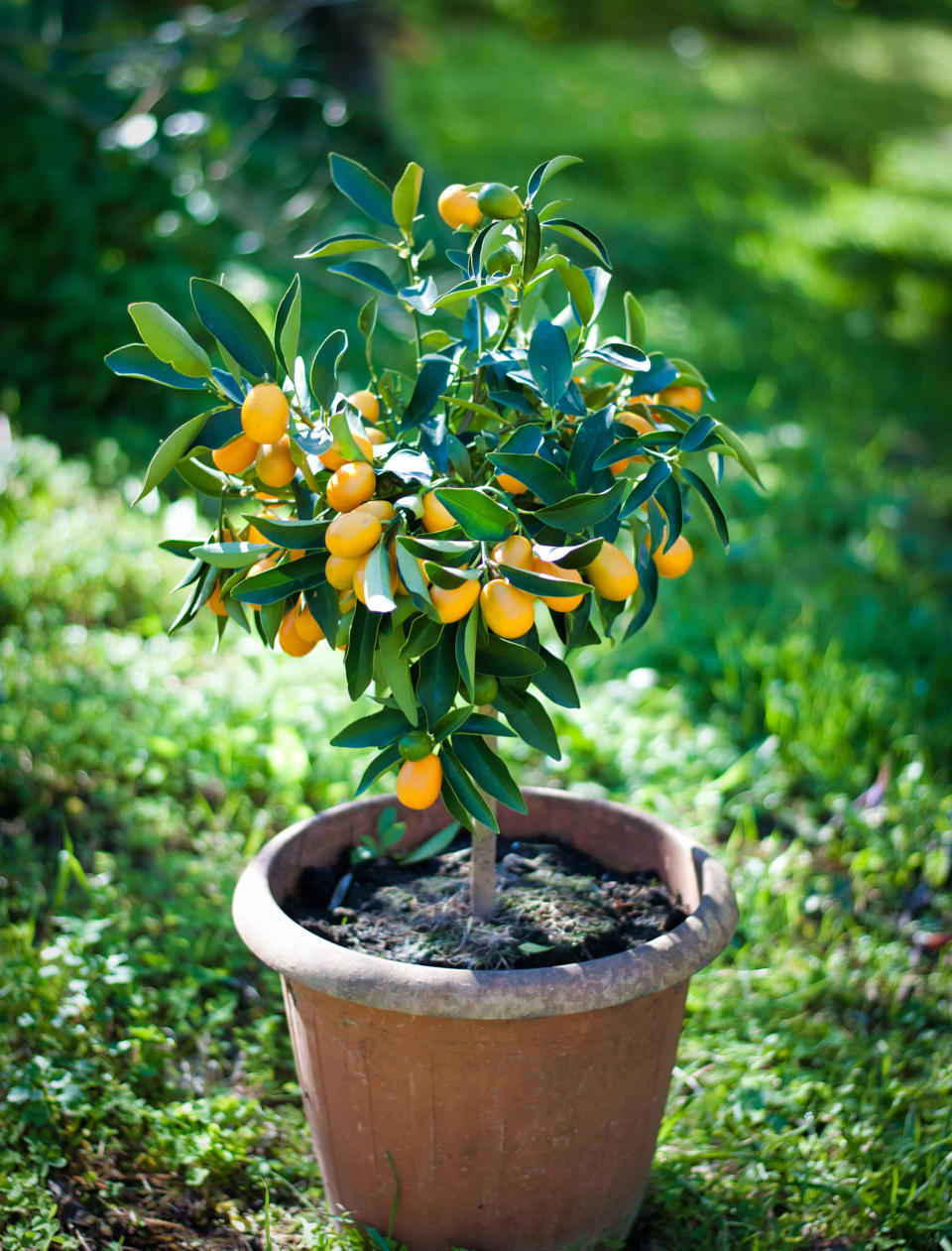
Citrus trees make for some of the best indoor trees, but you can grow them outside in the right climates.
‘If you’ve never tried kumquat, then you most definitely should – you can eat the entire thing, skin and all,’ says Barbosa Fernandes.
Producing small orange fruits and flowers that bloom in the summer, these compact trees can be easily grown in pots, and are one of the hardiest citrus fruits.
‘Position them in full sun, and plant in moist, well-draining soil. However, you don’t need to worry about cross-pollination or cold weather killing it down to 18°F (-8°C),’ adds Barbosa Fernandes.
(Francesco Maltinti / Alamy Stock Photo)Choose the best trees to grow in pots to add color, height and interest to patios and courtyards

 Yahoo Sports
Yahoo Sports 